The 67-year-old, based in Kon Tum City, the Central Highlands province of Kon Tum, now possesses a collection of 15,000 ancient objects that belonged to prehistoric people of various eras.
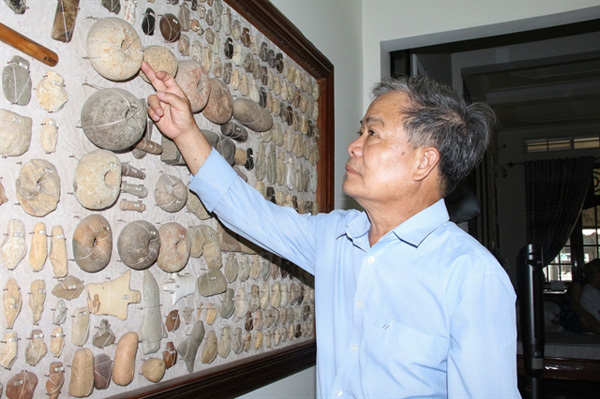 |
|
Thanh keeps the objects like his treasure. |
Thanh said after graduating from Phu Tho Technique Institute in the northern province of Phu Tho as an engineer, he studied two more years at the institute and stayed there to work as a teacher for five years.
He then returned to Kon Tum to live and worked for a machinery collective.
In 1989, he went to Lung Leng Village, Sa Binh Commune, Sa Thay District, with a friend to work at a local gold mine, which was not banned at that time. Since then, he has collected many strange stones.
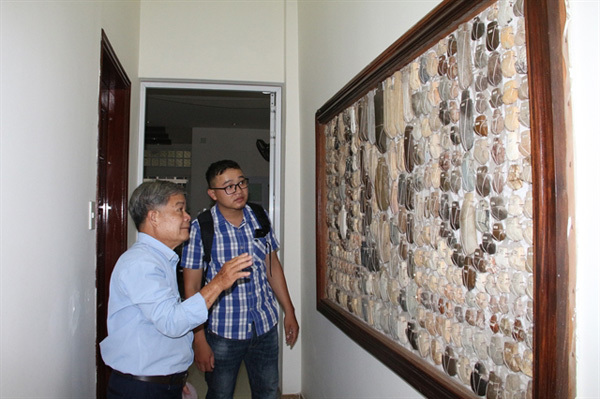 |
| Thanh introduces his treasures to a visitor. — VNS Photo Pham Hoang |
“At that time, only people searching for gold and locals could find strange stones,” he recalled. “Locals here were very poor. So I exchanged food and clothes for strange stones, mostly in the form of axes and hoes like working tools of early people."
"Though they are dead stones, they have special attractions to me,” he said.
By 1990, Thanh had collected more than 2,000 big and small stones.
He then time read articles and knew the stones were made intentionally by early people.
In 1993, researcher Nguyen Khac Su, head of the Stone Age Research Department of the Vietnam Social Science Academy, and some colleagues visited Thanh and stayed at his home for seven days to research the stones.
“Su explained the stones to me,” Thanh said. “The stones that seemed to have no value have been defined as priceless stone working tools that were used in the daily life of early people living in the Central Highlands.”
Thanks to Su’s instruction, Thanh could classify the stones into different groups of different eras, forms and materials.
Ancient stones
In his old house, valuable objects dating back thousands of years are placed tidily on cupboards.
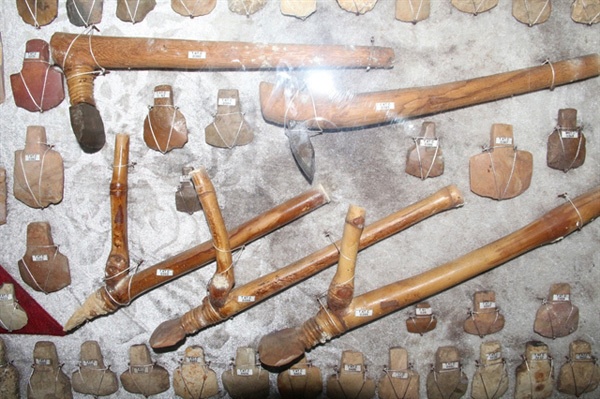 |
| Stone objects of various eras. |
The rest are kept in boxes. Thanh keeps a notebook, where he lists all the objects he keeps, as well as where and when he collected them.
He now has 15,000 stone objects.
Thanh is planning a private museum to exhibit and preserve objects by prehistoric humans.
“Ancient objects are like my brainchildren with all my enthusiasm,” he said. “The objects are also traditional holy objects handed down by our predecessors."
Thanh said he is getting old with health troubles and is worried no one will replace him to preserve the objects.
Thanh’s collection contains objects from the later period of the New Stone Age to the early Metal Age, from 4,000-2,000 years ago.
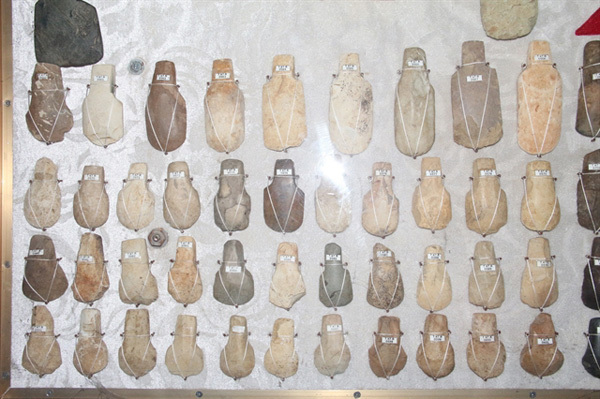 |
| His collection of stone working tools. |
Prof Su said the most striking value of the collection is the huge materials and diversified objects reflecting different angles of economic, cultural and social activities of prehistoric society in Kon Tum.
“The residents used to live and exploit land areas along the banks of the Dak Bla and Krong Poko rivers, in today’s Sa Thay District, Duc Co District and Kon Tum Town,” Su noted. VNS
Pham Hoang
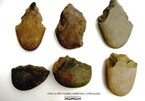
Primitive human traces found in Tuyen Quang province
Evidence of primitive humans have been found in several sites in the mountainous area of Chiem Hoa district, the northern province of Tuyen Quang, according to archaeologists.
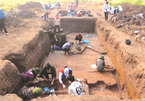
Vuon Chuoi reveals life in Hanoi thousands of years ago
A year and a half after Việt Nam News called on authorities to stop a construction project to protect the first and most important heritage site of civilisation in Hanoi, the latest archaeological findings make it